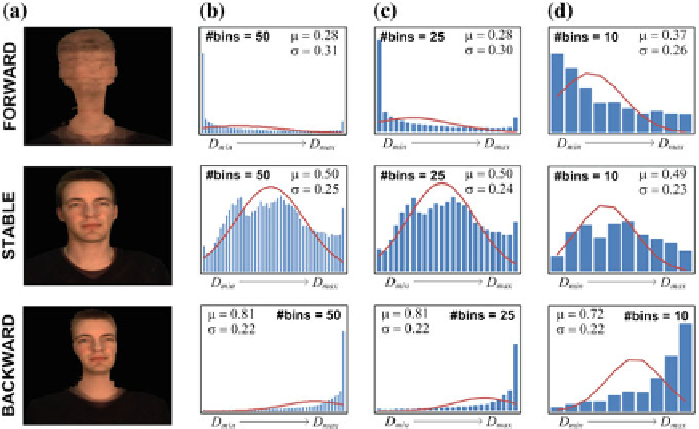Graphics Reference
In-Depth Information
•
Fo r w a rd
: If the user moves forward, he will exit the active scanning range. There-
fore, the histogram will indicate an exceptionally large number of detected depth
pixels toward
D
min
.
•
Stable
: The histogram indicates a clear peak in the middle, this resolves to the fact
that the user's head remains in the same depth range.
•
Backward
: Analog to forward movement of the user, the depth histogram will
indicate a peak toward
D
max
.
As depicted in Fig.
6.11
a, b, we fit a Gaussian distribution function
G
(μ, ˃ )
with center
on the histogram. The effective depth range
is updated according to Eqs.
6.9
and
6.10
, where
b
1
,
b
2
are constant forward and
backward bias factors that can be adopted to the inherent geometry of the scanned
object.
D
min
μ
and standard deviation
˃
D
min
D
max
−
represents the previous minimal depth, and
ʔ
=
for
denormalization.
D
min
+
(μ
−
D
1
=
D
min
=
b
1
·
˃)ʔ
(6.9)
D
min
+
(μ
+
D
M
=
D
max
=
b
2
·
˃)ʔ
(6.10)
of the Gaussian
fit changes and dynamically adapts the effective scan range of the system. The image
will briefly distort in this unstable case, but will quickly recover as the depth scan
is adapted for every image iteration. A real-time high frame rate therefore increases
As the user performs forward or backwardmovement, the center
μ
Fig. 6.11
The depth histogram-based movement analysis in normalized coordinates

